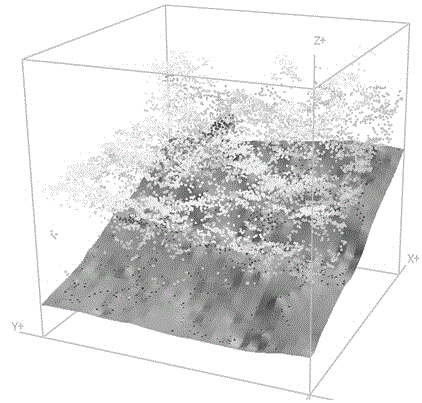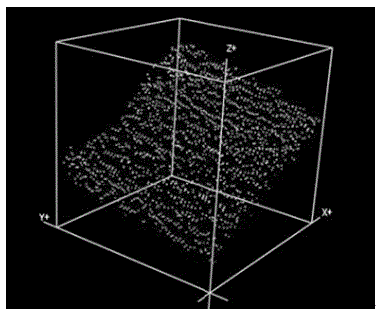Tree species classification method based on LiDAR (Light Detection and Ranging) false-vertical waveform model
A pseudo-vertical waveform and tree species classification technology, applied in the re-radiation of electromagnetic waves, radio wave measurement systems, and utilization of re-radiation, etc., can solve the problem of low classification accuracy, reduce labor and time consumption, and ensure space integrity and time. Consistency, the effect of reducing processing costs
- Summary
- Abstract
- Description
- Claims
- Application Information
AI Technical Summary
Problems solved by technology
Method used
Image
Examples
Embodiment 1
[0045] A kind of tree species classification method based on LiDAR pseudo-vertical waveform model, comprises the following steps:
[0046] 1) Use the airborne small-spot full-waveform LiDAR sensor (such as Riegl LMS-Q680i in Austria) for data acquisition. The commonly used remote sensing platforms are: Yun-5 / 12 and other aircraft. The sensor records the complete waveform information returned by each laser pulse, and the sampling interval is 1ns.
[0047] 2) LiDAR waveform data preprocessing
[0048] a) Estimation of noise level, data smoothing and calculation of inflection point: first convert the original data to the frequency domain, and then use the low value part with higher frequency as the judgment standard of noise level. Then use the Gaussian filter for smoothing, because the Gaussian filter can effectively smooth the data while maintaining the trend of the original curve to the greatest extent; judge the pulse intensity of the nearest 4 points around a certain point...
Embodiment 2
[0069] According to the method of embodiment 1, the classification of tree species in a forest area aimed at a northern subtropical natural secondary mixed forest as the main forest type is illustrated as an example. The forest area is 20-261m above sea level and covers an area of about 1000 hectares. The main tree species are the needle-leaved masson pine (Pinus massoniana) and fir (Cunninghamia lanceolata), and the broad-leaved oak (Quercus acutissima) and sweetgum (Liquidambar formosana). In the forest area, 20 square plots (30×30m) were arranged according to the composition of tree species, forest age and site conditions ( figure 1 ), each tree species was manually identified in each sample plot, and forest parameters such as diameter at breast height, tree height and crown width were measured; the center of the sample plot was positioned by differential GPS, and the relative position of each tree (that is, the horizontal distance from the center of the sample plot) dis...
PUM
 Login to View More
Login to View More Abstract
Description
Claims
Application Information
 Login to View More
Login to View More - R&D
- Intellectual Property
- Life Sciences
- Materials
- Tech Scout
- Unparalleled Data Quality
- Higher Quality Content
- 60% Fewer Hallucinations
Browse by: Latest US Patents, China's latest patents, Technical Efficacy Thesaurus, Application Domain, Technology Topic, Popular Technical Reports.
© 2025 PatSnap. All rights reserved.Legal|Privacy policy|Modern Slavery Act Transparency Statement|Sitemap|About US| Contact US: help@patsnap.com



